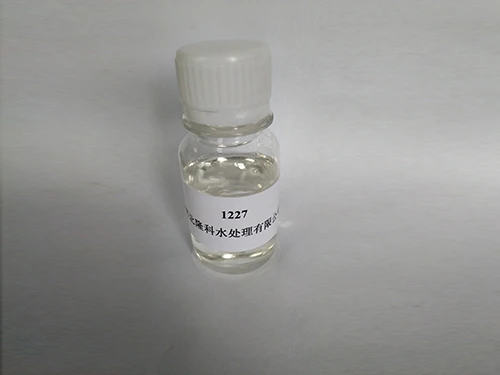Exploring the Effects of Isothiazolinone at 1.5% Concentration in Industrial Applications
Understanding Isothiazolinone A Closer Look at 1.5% Concentration
Isothiazolinones are a class of chemicals that serve a crucial role as biocides and preservatives in various industries, including cosmetics, personal care products, and household goods. Specifically, compounds such as methylisothiazolinone (MIT) and chloromethylisothiazolinone (CMIT) are widely recognized for their effectiveness in inhibiting the growth of fungi, bacteria, and algae. The topic of isothiazolinone, particularly at a concentration of 1.5%, is significant for both manufacturers and consumers due to its benefits and potential risks.
Applications of Isothiazolinones
Isothiazolinones are commonly found in a variety of products. In the cosmetic industry, they are utilized to prevent microbial contamination in lotions, shampoos, and other personal care items. Household cleaners, paints, and adhesives also exploit the antifungal and antibacterial properties of isothiazolinones to prolong shelf life and ensure safety. The demand for isothiazolinones is driven by their efficiency at low concentrations, which allows manufacturers to meet regulatory requirements while still providing effective preservation.
At a concentration of 1.5%, isothiazolinones maintain a strong performance in inhibiting microbial growth. This specific dosage is often studied for its effectiveness in formulations, balancing the benefits of preservation against the need for safety and skin compatibility. For manufacturers, knowing the exact percentage that provides optimal protection is essential for product development.
Safety and Regulatory Concerns
Despite their effectiveness, isothiazolinones have raised concerns regarding skin sensitization and allergic reactions. Over the years, an increasing number of reports have emerged linking these compounds to skin allergies and irritations, primarily with prolonged or high exposure. The safety profile of isothiazolinones has led regulatory bodies to scrutinize their use in consumer products, especially in cosmetics and personal care applications where human exposure is significant.
Regulations differ globally, but many countries have imposed restrictions on the allowable concentrations in various products. For instance, in the European Union, guidelines now dictate that products containing isothiazolinones must limit MIT to lower concentrations to mitigate the risk of allergic reactions. The 1.5% concentration has come under particular examination; while it is effective, it borders on thresholds where sensitization may occur. As such, manufacturers must carefully assess and communicate the safety of their formulations to consumers.
isothiazolinone 1.5

Consumer Awareness
For consumers, awareness of isothiazolinones is vital in making informed choices regarding personal care and household products. As allergic reactions to these preservatives can be severe, understanding product labels to identify the presence of isothiazolinones is essential. Moreover, consumers should be informed about the symptoms of sensitization, which may include redness, itching, and swelling upon skin contact.
Given the increasing trend towards natural and less irritating ingredients in cosmetics and personal care, many brands are reformulating their products to eliminate or reduce the concentrations of isothiazolinones. This responsiveness to consumer demand highlights the importance of ingredient transparency.
Future Perspectives
The future of isothiazolinones in products likely rests on continued research and development. Innovators in cosmetic chemistry are exploring alternative preserving agents that can effectively replace isothiazolinones, achieving the same degree of effectiveness without the associated risks of allergic reactions. Advances in biotechnology may lead to the development of more sustainable and less harmful biocides.
Moreover, regulatory bodies are also expected to continue reassessing the safety of isothiazolinones, potentially leading to stricter guidelines or further restrictions. Therefore, consumers can expect to see shifts in product formulations as companies respond to safety concerns and seek to align their products with evolving regulations.
Conclusion
The presence of isothiazolinones at a concentration of 1.5% represents a significant decision point for manufacturers and consumers alike. While they are effective preservatives that play an essential role in the safety and longevity of products, the risks associated with skin sensitization necessitate a cautious approach. As the industry moves toward greater transparency and safety, the ongoing dialogue surrounding isothiazolinones will likely shape the future of product formulation and consumer health. Understanding this balance is key to ensuring that products are not only effective but also safe for everyday use.
-
Understanding Polycarboxylic Acids: Properties, Applications, and Future PotentialNewsJul.28,2025
-
Scale Inhibitor Explained: How to Protect Your System from Limescale and Hard Water DamageNewsJul.28,2025
-
Scale and Corrosion Inhibitors: Essential Chemicals for Industrial Water System ProtectionNewsJul.28,2025
-
Polyaspartic Acid: A Biodegradable Polymer for Sustainable ChemistryNewsJul.28,2025
-
Isothiazolinones: A Versatile Antimicrobial Class with Industrial Power and Regulatory ChallengesNewsJul.28,2025
-
A Deep Dive into 2-Phosphonobutane-1,2,4-Tricarboxylic Acid (PBTC)NewsJul.28,2025





